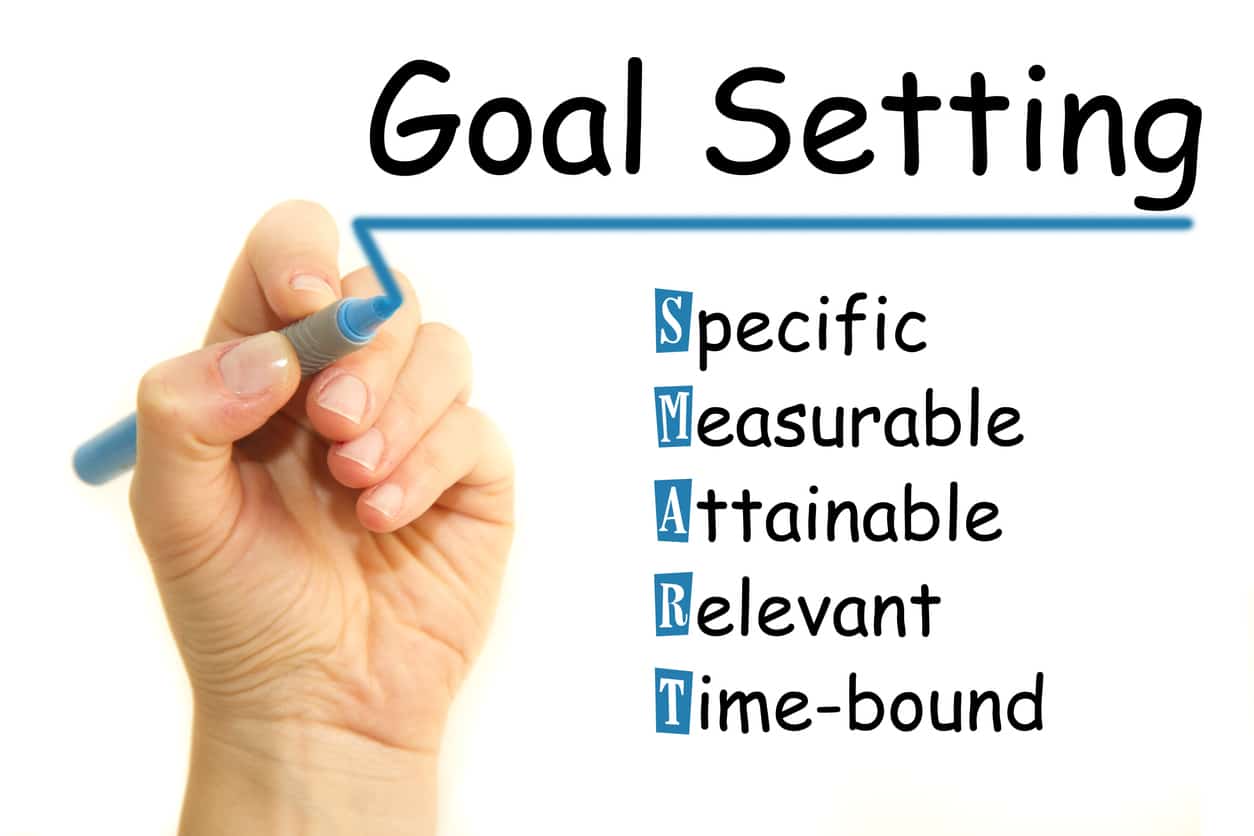After consulting for hundreds of businesses over the past three decades, we’ve seen the importance of effective annual planning to the success of a business. It doesn’t matter what industry you are in or how large your company is, doing effective annual planning and creating a solid annual plan provides an indisputable advantage.
In this article, we outline the key elements of an effective annual plan, the steps for effective execution, and how to establish a success rhythm. When implemented well, these insights will help you enjoy your leadership role more and grow your business faster, smarter, and easier.
How Effective Annual Planning Makes Growing Your Business Easier

- An Effective Strategy (think)
- Effective Execution (act)
Without an effective strategy, you have no direction. You have not clearly defined where you want to go, what might get in your way and / or what might be the shortest path to achieve your goals. If you are the fastest runner or the hardest worker, but you do not have a defined strategy or goal, you cannot use your skills effectively to win.
The same holds true for a company with a great strategy, but ineffective execution. Both are required to maximize your effectiveness and win.
An effective annual plan provides:
Marketplace Insights & Clarity
- What market(s) are you truly in?
- What is changing and shifting within your market(s)?
Clarity of Your Positioning
- How do you compare – products, services, price, etc.
- Are your creating and communicating true differentiation?
Core Strengths Identification
- What do / can you do that is truly better than anyone else?
- Are you effectively leveraging this to create a competitive advantage?
Strategic Decluttering
- Are you clear on your specific goals?
- Are you clear on the specific strategies needed to achieve your goals?
Team Alignment
- Is your team connected to your vision (purpose, core values and mission numbers)?
- Is your team excited by and engaged in your vision
- Do your team’s individual success measures align with your goals?
Executable Key Success Measures
- Do you know exactly what you need to measure to succeed?
- Do you have the necessary performance intelligence systems to monitor success?
Annual Planning Challenges

- We already understand our market and where we are going.
Annual planning is not about proving yourself right. This is a limiting mindset. It is about taking a step back, immersing yourself in the process, doing the work, and uncovering fresh new ideas and insights that lead you and your organization to far greater success.
- We’ve never done this before, and things are fine.
There is a profound saying, “The true enemy of success is success”. Imagine what a successful company could have achieved if they clearly understood all the dynamics available to capitalize on their strengths? Annual planning will streamline the amount of effort and vastly amplify the success of a company like this.
- The world is too dynamic. Any plan we create will not be correct.
The expected outcome of annual planning is not an exact map of what will happen throughout the year within your business. It is a model with which you can gain clarity. It provides a deeper understanding into everything that may impact your business and how those events might impact you. When you plan and evaluate these factors, you more prepared for unforeseen events. This empowers you to identify threats and take corrective action more quickly.
- We are too busy. There isn’t time for this.
This is my favorite on the list. Not having time for effective annual planning is a tell-tale sign of an organization without a plan. Any organization that makes this excuse is exactly the type of organization who truly needs to invest time in annual planning. You cannot succeed running fast and hard in an undefined direction. This quote by John Wooden says it all: “If you don’t have time to do it right, when will you have time to do it over.”
If you are not utilizing annual planning in your business, you are missing out on a huge opportunity. Forget about the excuses and make time for this. You will reap the benefits.

FREE Annual Planning Consultation with a Webolutions Expert
Steps for Effective Annual Planning
The steps below are your roadmap for effective annual planning.
1. Industry / Market Identification
Most businesses today can fit into multiple industries and/or markets. For example, Webolutions actively competes with companies in all the following:
- Industries
- Digital Marketing Agencies
- Web Design & Development Companies
- Branding Agencies
- SEO Companies
- Organization Development Companies
- Customer Journey / CRM Consultants
- Data Analytics & Performance Intelligence
- Markets
- Denver Metro Area
- National
The first step is to create a list of the all the industries and markets in which your company competes. It is good to start with a broad list. Ask your team for input on this.
2. Competitive Understanding
This is a step that some businesses skip. However, it provides valuable insights. For each industry identified above, you should create a list of the competitors. We typically use market research tools to help identify these companies. You can ask your sales team or even your clients who they see as your competitors. The key is to identify all the top companies with which you compete for each of your identified industries and within each of your identified markets. Blockbuster made this mistake when they did not consider Netflix a competitive risk for their business. This exercise is from where some of most important insights will come.
Next, dig in deeper for each competitor. Some of the information we gather when doing this planning for our clients includes:
- Company size – annual sales, number of employees
- Website presence – domain authority, inbound links, number of pages, information architecture, keyword targets / markets for search, paid ad spend, etc.
- Website engagement strategy – messaging, USPs, calls to action, offers
- Range of products / service offerings – list specific items as well as categories of your product / service offerings
- Cost products / service offerings – include cost of materials as well as labor costs
3. Self-Assessment

There may be larger companies who provide a wider range of products or services than you and there may be niche companies who focus on a single product, service or a unique way that someone is delivering something which may or may not be a part of your current offering. List out the things your competitors are doing well and the fresh ideas this inspires.
Next, based on the data, outline:
- Areas of concern
- Areas in which you need to improve
- Your unique and highly relevant competitive advantage(s)
- Areas of leadership opportunity
4. Trends & Lessons Learned
For each identified industry or market, you must identify the changes taking place that may impact your business. Some of these trends might be:
- Workforce shifts – labor availability, pay rates, benefits, remote work
- Social shifts – health conscious, sustainability, mental health
- Economic shifts – inflation, interest rates
Next, identify the key lessons you’ve learned in the past which may come into play for your future planning. Some of these might be:
- We need better team performance measures to drive results
- Paid marketing performs better when…
- Our closing rate on sales increases when…
Taking the time to work through these two items provides you with insights and perspectives you would not otherwise have. It better prepares you for future success.
5. SWOT Analysis
Most everyone knows what a SWOT is and has participated in one at some point in time. However, we often see this executed poorly. If it isn’t done correctly, your results will leave much to be desired. Some fundamental elements of a successful SWOT include:
- Opportunities & Threats must be external factors to the company. I see this done incorrectly all the time.
- Keep your list relevant. A potential Threat could be that the world might end. But this suggestion has no relevant value as any plan adjusting for this would be mute. Unless you are space company.
Your Competitive Understanding and Self-Assessment work (steps 2 and 3 above) should provide some great information and insights for your SWOT.
Often, a SWOT is done for the whole company. Our suggestion is to conduct a separate SWOT for each primary operational area of the company to provide more clarity. Some of the primary operational areas might include:
- Sales
- Marketing
- HR
- Innovation
- Finance
- Team Empowerment
- Customer Service
6. Critical Areas of Focus
From your SWOT results, you should be able to identify some key intersections. You may have Strengths and Opportunities that intersect creating new possibilities. You may have Threats and Weaknesses that you must address.
As you review these intersections, make a list of your learnings. These learnings will become your critical areas of focus for the next year or beyond. They constitute the things to which you must pay attention in your business. List these critical areas of focus in order of priority starting with those which will have the largest impact if not addressed.
7. Company Vision & Goals Review
Now that you understand your industry / market, competition, trends, lessons learned, self-assessment, strengths, weaknesses, threats and opportunities AND have an ordered list of critical focus areas, it is time to look at things through a different lens.
From Jim Collins’ (Author of Beyond Entrepreneurship, Good To Great, Built To Last, and Great By Choice) work, a company vision is a combination of your core values, purpose, and goals. This is your guiding compass for all strategic decision making. If you do not yet have a strategic plan with these critical elements, you must create this first for effective annual planning.
Based on your vision, review your critical area of focus. Ensure these align with your vision and goals. This will help you to start formulating your strategy for the coming year.
8. Strategic Initiatives

Guidance for your strategic initiatives:
- These can span multiple years along your mission
- These should be broad in nature
- You should limit these to no more than 5
Some possible strategic initiatives could be:
- Double our client base in the US by X year
- Create a world class culture
- Provide industry customer service
9. Annual Operational Priorities
Now, for each of your strategic initiatives, you need to create annual operational priorities. Annual operational priorities are the things that you MUST do in the coming year to achieve your goals. This is where the broad becomes more focused on the upcoming year.
Let’s take a look at one of these together. Let’s say that we have a strategic initiative to “Double our client base in the US by X year.” Some of the annual operational priorities on which we need to focus and achieve in the coming year may be:
- Develop the systems & understanding to consistently generate our required leads
- Develop the programs & systems to retain 95%+ of our existing customers
Do your best to limit your annual operational priorities to no more than 4 per strategic initiative and be sure to keep these somewhat broad in nature. We will be drilling down further as we develop the next items.
10. Quarterly Operational Priorities
Quarterly operational priorities are the initiatives you will implement on a quarterly basis to achieve your annual operational priorities. These will help you establish timelines for your initiatives and gain more clarity into the required activities.
Let’s run though an example together
- Strategic Initiative – “Double our client base in the US by X year”
- Annual Operational Priority – Develop the systems & understanding to consistently generate our required leads
- Q1 Quarterly Operational Priority – Begin a paid ad program
In this scenario, in Q1 the company will begin a paid ad program as part of the strategy to achieve the annual operational priority. As you work through these steps, you will gain greater clarity and sense for exactly what will take place quarter by quarter.
Many companies begin the year with a loose annual plan. Then they get busy, and many initiatives fall by wayside. If this sounds familiar, this approach will help you stay on track and grow your company much faster.
11. SMARTs

- Specific – State what you’ll do, use action words
- Measurable = Provide metrics or data to evaluate success
- Achievable – Possible to accomplish, attainable
- Relevant – Aligned with your vison & goals
- Time-bound – Have a specific start date and completion date
SMARTs are the actual initiatives you need to complete to achieve your quarterly operational initiatives. Each SMART has several key elements, including:
- An accountable team member – the person who monitors its progress
- Clear success measures – exactly how everyone knows that it is done and what success looks like
- Timeline – Pick a specific start and end date
- An outline of what the SMART is – Steps you’d like to see followed, key references to include, etc.
Let’s run through some examples of SMARTs together
- Strategic Initiative – “Double our client base in the US by X year”
- Annual Operational Priority – Develop the systems & understanding to consistently generate our required leads
- Q1 Quarterly Operational Priority – Begin a paid ad program
- SMARTs
- Hire a Successful Paid Ad Program Manager
- Accountable Person – Joe – Operations Manager
- Responsible Person – Sally – HR Manager
- SMART Outline – Hire an experienced (5+ year) PPC Manager who has managed budgets over $100mm / mth in Pay Per Click, who can demonstrate knowledge of a Paid Ad Funnel, who has worked at a company in XYZ industry for at least 3 years, who fits with our company core values, who is able to come into the office for work,
- SMART Timeline – By February 15th of X year, the new person will be hired and successfully onboarded
- Create A Viable Paid Ad Marketing Plan
- Accountable Person – Joe – Operations Manager
- Responsible Person – New Paid Ad Program Manager
- SMART Outline – Using our sales goals, industry benchmarks, target audience information and market research, this plan will show expected spend, the different stages in the funnel, and the anticipated ROI from the new proposed Paid Ad Market Plan.
- SMART Timeline – By March 25th of X year, the plan will have been presented and reviewed by our senior marketing team for evaluation
- Hire a Successful Paid Ad Program Manager
12. Specific Role Responsibilities – BIG 3s
SMARTs are one-time initiatives that a business MUST complete to achieve their business goals. Specific role responsibilities are the day-to-day role responsibilities of each team member required to ensure that the organization achieves its mission goals. Because we limit these specific role responsibilities for each person to just 3, we call these BIG 3s.
By limiting each person’s specific role responsibilities to just 3 things, we force ourselves to be extremely focused on exactly how we will measure the success of each person’s role. This provides our team members with the extreme clarity and confidence they need to excel at their role.
Each BIG 3 contains:
- The name of the responsibility
- A description of the responsibility
- Clearly defined success measures – based on data!
Each team members’ BIG 3s are tied directly to the company vision and our annual plan. When every team member successfully achieves their BIG 3s and SMARTs, the organization is sure to achieve their mission goals.
Successful Annual Planning Execution

When an effective annual plan has been properly put together, each team member’s SMARTs and BIG 3s are key indicators to the success of your business. Every team member should clearly understand and have access to the data to measure their individual success on a weekly or monthly basis. Defined success measures make this completely objective.
We use a system of green, yellow, and red for status reporting. If a SMART or BIG 3 is green, everything is on track and going as planned, per the data. If a SMART or BIG 3 is yellow, the team member is still achieving their goal, but there are some risks or issues we should start to address before they are not being successful. If a SMART or BIG 3 is red, the team member is not achieving that specific success measure and the matter requires immediate attention. Our company goals may be in jeopardy.
You can have your status report check ins as often as you choose. We would suggest at least once a month at a minimum. It is a bit like being on a diet and getting on the scale. The more often I get the data, the more likely I am to succeed.
Annual Planning FAQs
Q: Why is annual planning important?
An annual plan provides a data-based model of success for the upcoming year. In addition, your annual plan creation process creates fresh and unique business insights to keep the company aware of industry and market changes.
Q: What should be included in annual planning?
Annual planning should include research and the resulting insights from your industry, markets, competitive research, trends, lessons learned and your internal SWOT analysis.
Q: What goes into an annual plan?
An annual plan should include company vision, strategic goals, critical areas of focus, annual operational priorities, quarterly operational priorities, defined company initiatives (SMARTs) and individual role responsibilities.
Start Today
If you have not been doing annual planning, the task can seem daunting. The key is to get started this year. Do what you can. As you practice, you will improve. Each year, what goes into your annual plan will evolve and become more critical to your business success. No matter the level of time and effort you put into this, you will achieve a new level of clarity, understanding and wisdom about what your company needs to become more successful.
Summary
Annual planning creates a concrete plan for your company’s success in the coming year. It provides insight and perspective which would otherwise not exist. If you follow this roadmap, you find the experience extremely valuable and enlightening.
About Webolutions
Webolutions is a full-spectrum management consulting and strategic growth implementation company. We help businesses across the country identify and effectively bring their unique story to life, allowing them to scale faster, smarter, and easier.
Areas of expertise:
- Differentiating Brand Development
- Marketing & Communications Strategies
- Customer Journey Mapping & Execution
- Enterprise Website & Application Development
- Cross-Platform Data Systems Integration
- Organizational Development Strategies
- Team Alignment, Culture, & Performance Solutions
- Business Performance Intelligence Systems
A Special Offer
To speak with one of our experts about how we can help you implement a successful annual planning rhythm for your company of at least $5 million in annual sales, call us at 303-300-2640 and request a Free Annual Planning Consultation. During this 60-minute introduction, we’ll help you start outlining your plan. You can also email any questions to info@webolutions.com.